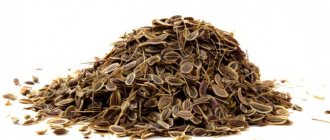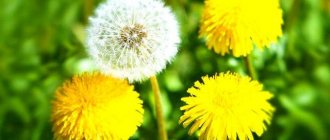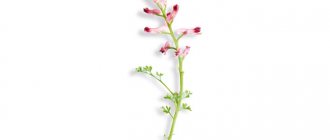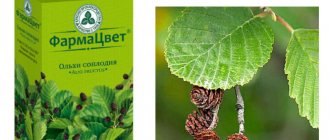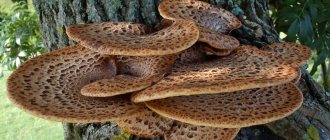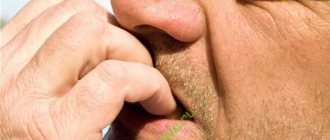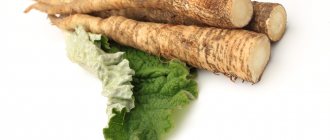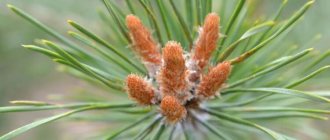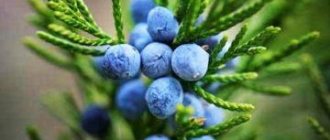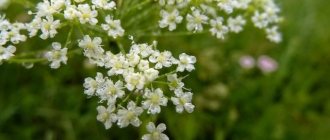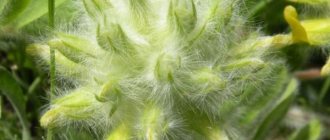Birch tar has been known to mankind for several centuries. Previously, it was used to heal wounds, get rid of pinworms and against tumors. In addition, shoes and armor were lubricated with tar so that they would not get wet. This substance was considered essential. You can study what the drug is used for in our time, methods of its use and contraindications in this article.
What is birch tar?
The use of natural oily liquid internally and locally can relieve most pathologies. Few people are aware of the healing qualities of tar, and what specific diseases it cures. Do you know that this useful product is obtained from birch bark in a special way? After careful processing, a dark brown viscous mass with a rather unpleasant odor is obtained. Just a spoonful of this substance can spoil delicious and sweet honey, as well as heal the body from illnesses. Isn't that an interesting combination of properties? In the distant past, when there were no pharmacies in the world, tar was prepared only by healers to heal cuts and burns. In modern society, it is added to various lotions, ointments and creams that have antiseptic and insecticidal properties. Among the well-known and popular preparations based on this substance is Vishnevsky ointment. Official medicine considers tar a valuable product with antiparasitic, antiseptic and antimicrobial qualities. Its composition is saturated with microelements, useful components, such as guaiacol, resin, xylene, phenol, dioxybenzene, phytoncide.
Medicinal properties
Birch tar has an analgesic, absorbable and anti-inflammatory effect. Use for therapeutic purposes is due to the content of healing substances. It is actively used to stimulate and accelerate the regeneration of the epidermis, as well as improve blood supply to tissues. Traditional medicine widely uses it to treat skin diseases: erysipelas, seborrheic dermatitis, vitiligo, psoriasis, folliculitis and eczema. Prescribed for scaly lichen, fungal infections, scabies, bedsores, pediculosis, trophic ulcers and other pathologies. Tar can heal burns and various wounds. To do this, make compresses that are applied to the affected areas. The oily liquid nourishes and strengthens internal organs, mobilizes the body's defenses in the fight against illnesses. With the help of tar you can overcome dropsy of the abdomen, urolithiasis, digestive disorders and urethritis. Traditional healers recommend the remedy for the treatment of bronchial asthma, sore throat, acute respiratory infections, mastitis, bleeding and even gangrene. It is widely used in cosmetology for acne, problem skin, dandruff and other disorders.
Indications for use
Since birch tar contains excellent antimicrobial components, doctors prescribe it for the treatment of inflammatory diseases. Good healing properties make the drug effective in the treatment of wounds, including purulent wounds and severe skin diseases.
For the following diseases, tar can be used:
- angina;
- otitis;
- skin fungus;
- mastitis in nursing women;
- urethritis;
- scabies, eczema, psoriasis, furunculosis, skin rashes;
- asthma;
- gangrene, burns, bedsores and frostbite;
- urolithiasis disease;
- stomatitis;
- hypertonic disease;
- metabolic disorder;
- atherosclerosis;
- tumors;
- problematic skin;
- hair loss.
Contraindications
The drug cannot be used during pregnancy and lactation, therefore during treatment it is necessary to avoid breastfeeding. Tar contains a large number of carcinogens that negatively affect the fragile body of the baby.
Important! When treating purulent mastitis, the use of the drug is contraindicated. Treatment is possible only at the initial stage of lactostasis.
Also, taking the drug is prohibited in case of intolerance to its components and chronic kidney inflammation. Before use for the first time, it is necessary to conduct an allergy test.
Use in gynecology
The miraculous birch tar will help in the treatment of fibroids, ovarian cysts, adenomas and benign formations. Oral use in a certain dosage gives effective results. Let us describe an old, proven recipe for mastopathy: for three days in a row, add 3 drops of the product to 50 ml of warm milk, from the 4th to the 6th day - 5 drops, from the 7th to the 9th - 7 drops. You should take the medicine three times a day. After the course of therapy, a ten-day break is taken, and we repeat the treatment again, only in the reverse order - to reduce the amount of tar.
How to take tar against parasites when treating fungus and acne?
A fungus that affects the nail plates is often not completely cured by various ointments, and after some time the symptoms of the disease return again. Birch tar effectively copes with fungal infections; it is not for nothing that many medicines intended for the treatment of mycoses have been created on its basis. When using a natural product, it is recommended to simply wipe the affected areas of the nail and surrounding skin with it several times a day.
But fungal infections can be more than just nails. When pathogenic fungi multiply in the oral cavity or genitals, you can use tar water, which is prepared in a ratio of 1:10 and infused for two days. You should drink a couple of spoons per day before meals. Additionally, the infusion is used to treat the oral mucosa and gargle. If the genitourinary system is affected, douching with tar water is done. In this case, it is usually possible to cope with the fungal infection in 10-14 days.
The use of birch tar internally against parasites is done as follows:
Add a drop of the product to 50 ml of warm milk and drink 30-40 minutes before meals. The next day you need to add a couple of drops and thus gradually increase the total volume of tar taken to 15-20 drops. After this, you should take a day break and start taking the natural product in the reverse order, that is, daily reducing the amount of tar by 1 drop. Using this method, you can not only cope with different types of parasites in the intestines, but also cure giardiasis of the liver.
Another way to use a deworming remedy is to take it with honey. In a spoon of light flower honey, you need to dissolve 1 drop of birch tar on the first day, and adding a drop every day, take the product for 12-15 days. The intestines are guaranteed to be cleared of parasites, while the functioning of internal organs and overall health will improve.
Another common problem is skin conditions. Pimples, blackheads, and various rashes are a reflection of internal pathologies. Taking tar helps to cope with this problem due to the fact that metabolism is normalized, and the body is gradually cleansed of harmful and ballast compounds. To eliminate skin problems, you need to drink a water infusion of tar, prepared in a ratio of 1:8. It should be taken after this remedy has been infused for two days in a dark place. You need to drink tar water for acne twice a day, half a glass, on an empty stomach. The course of treatment is at least 10 days.
Popular recipes
Like any folk remedy, birch tar is used in a variety of ways. There are many simple and accessible recipes for its use, the effectiveness of which has been proven for centuries. Let's take a closer look at the most popular of them:
Birch tar and rye bread
The use of these ingredients clearly confirms that everything ingenious is simple. You need to drop a drop of tar on a small piece of rye or malt bread and eat it. Every day you should increase the dose of the remedy so that the body gets used to it gradually and add it drop by drop, bringing the total volume to 10-12 drops by the end of the course. After this, take a week break and repeat the course again. This simple recipe helps to completely normalize the functioning of the stomach and intestines.
Tar and sea buckthorn
Another popular way to use tar is to combine it with sea buckthorn jam. The scheme is the same as in the first case, only instead of bread they take a large spoon of jam, to which tar is added dropwise from 1 to 8-10 drops. Then take a break for a week and, if necessary, repeat the course of treatment. This method is very good for normalizing the functioning of the kidneys and heart.
From sexually transmitted infections
The following folk recipe will help against candidiasis and vaginitis: take baby soap, grate it and mix it with tar (1:1). Small balls are formed from the resulting soap mass and dried. Dissolve the required amount of medicine in water to the consistency of a thick ointment, treat the genitals. Excellently relieves itching, burning and inflammation (course of treatment for about a month). A similar ointment is used for cramps in the limbs. Apply it in a thin layer to the sore spots and wrap it in a woolen scarf. Store tar balls in a glass container in the refrigerator.
Treatment of the respiratory system
Frostbite, sore throat and colds can be cured by birch tar. External application in the form of compresses gives a wonderful healing effect. The liquid is applied to sterile gauze bandages, applied to the chest, tied with a scarf on top and left for 20-30 minutes. The compress has an antiseptic and warming effect. You can quickly and permanently get rid of a debilitating cough: dilute part of liquid tar in 8 parts of purified water, stir with a wooden spoon and leave for 2 days. Remove the formed film from the surface of the medicine, pour the liquid into a clean container and place in the refrigerator. Take birch tar orally, a large spoonful, before bed. The course should not exceed ten days. Practice shows that after the first dose, the coughing attack recedes or decreases.
For skin diseases
Getting rid of scabies: mix two large spoons of sulfur powder with 5 grams of lard (can be replaced with badger or pork lard), a dessert spoon of tar and laundry soap (5 g). Rub the healing composition onto sore spots for five days. For acne, a cleansing lotion will help: for 50 ml of 95% alcohol you will need 10 g of birch tar and two drops of salicylic alcohol. Before applying, thoroughly cleanse the skin of cosmetics and impurities. Apply twice daily. To treat wounds, psoriasis, and eczema, prepare an ointment: combine 50 grams of the product with one hundred grams of butter and two yolks. Store the product in the refrigerator.
How to take birch tar internally?
The concentrated product is a powerful medicine, so you should not independently increase the dose recommended by your doctor. There are many recipes for elixirs, the main component of which is birch tar. Internal use is acceptable in combination with bee products, whole milk, rye bread, sugar, and fresh fruit juices. A water extract made from tar is also used, which is less toxic than the product itself.
- Cleansing the body of accumulated waste and toxins
Carrying out a course of cleansing with birch tar will help neutralize and naturally remove metabolic products, toxic and carcinogenic substances. The duration of therapy ranges from 7 to 21 days and depends on the condition of the body. It is advisable to first obtain the approval of the specialist observing you.
A simple and effective cleaning method is to take bee honey with tar. For 5 g of beekeeping product, take 1 drop of birch resin. The drug is taken once a day, before meals, dissolving under the tongue, for 1 week.
Tar water has proven itself well in cleansing the body and treating various internal and external diseases. It is taken 200 ml on an empty stomach before breakfast for a week, take a 3-day break and repeat the course for another 7 days.
To prepare an aqueous extract, pour ½ liter of tar into a three-liter jar, fill the container with hot boiled water, mix thoroughly and leave at room temperature for 9 days. After the specified period, the top layer of thick liquid is removed (tar, which is lighter than water, floats to the surface), and the water is carefully poured into a clean, dry jar.
Treatment of helminthic infestations
Tar promotes the destruction and subsequent removal of lamblia, tapeworms, roundworms and other parasites and worms. Traditional healers recommend deworming in a course lasting from 16 to 24 days. The easiest way is to take tar added to natural honey. The product is taken on an empty stomach, before bedtime, with a glass of drinking water.
The portion of honey remains the same throughout the course - 1 tsp. The amount of tar depends on the day of therapy. On the first day, 1 drop of resin is added to honey, on the second – 2, on the third – 3, and so on until the 8th day. From the 9th day the countdown begins, bringing the number of tar drops to 1. A repeated course (if necessary) is possible after a 10-day break. It should be noted that it is advisable to use birch tar against parasites under the supervision of a parasitologist with laboratory tests.
According to reviews from numerous patients, birch tar, when taken internally, has a positive effect on the entire body. After a course of treatment, susceptibility to ARVI decreases, the bronchi and lungs are cleansed, intestinal motility is activated, stool is normalized, blood vessels are strengthened, hair loss stops, and the color and condition of the skin improves.
Making tar soap for acne
Tar soap has long been considered one of the most effective remedies in the fight against problem skin. To do this, you don’t have to buy it; you can make it yourself from natural ingredients and in a short time. It should be noted that this soap is suitable for all skin types and does not cause allergies. Let's get started: you will need baby soap without chemical ingredients, about two hundred grams and a big fly in the ointment. The soap should be grated and heated in a water bath, then add birch liquid and mix well. Pour the mixture into special molds and let it harden. All is ready!
Contraindications
Birch tar is endowed with undeniable positive properties. But, despite the enormous benefits and many advantages, it still has some limitations in use. It should not be used in the armpits, skin folds or on the bend of the knee. You cannot treat with this drug for a long time, otherwise it can cause severe irritation and aggravate the eczematous process. If you decide to use it internally, then use only a natural, purified preparation for these purposes. Do not use pharmaceutical products internally, as they contain carcinogenic substances. Use during exacerbation of pathology is prohibited. Contraindications include lactation and pregnancy. Remember, before applying tar to your skin, test it on your elbow to determine if you have an allergy.
Ladies, who have heard or tried this treatment for female diseases. It seems that tar helps with both mastopathy and fibroids. It really smells strong, but that's just a minor thing.
How is birch tar made and what is it used for?
The substance is made from birch bark (birch bark), which is placed in a special container with a tube and heated. Due to the high temperature, liquid begins to release from the bark, which flows through a tube into the prepared vessel - this is tar.
You can prepare the substance yourself at home, but the easiest way is to buy it at the pharmacy. Now the medicine is sold everywhere and has an affordable price. Pure tar is sold in liquid form in glass jars. The substance can also be found in some medications, for example, Vishnevsky ointment.
The substance contains several thousand different components. Among them:
- cresols and cytocides, which perfectly disinfect;
- phenols, known for their antiseptic effect;
- various amino acids;
- guaiacol, which has an anti-putrefactive effect.
Thanks to such components, the substance has excellent antimicrobial and antiparasitic properties. Cosmetologists and nutritionists recommend the use of birch tar to cleanse the body and remove toxins. In addition, the drug is used to treat:
- circulatory system,
- skin and wounds,
- consequences of chemotherapy,
- of cardio-vascular system,
- respiratory system,
- gastrointestinal tract,
- female reproductive system.
What are the benefits of birch tar?
Birch tar also promotes the regeneration of the upper layer of the skin - the epidermis, improves blood supply to tissues and accelerates the keratinization of cells. Unfortunately, over many years of studying birch tar, scientists have not been able to reveal its main secret: which or which substances in its composition have a healing effect.
Tar, first of all, is an excellent antiseptic, i.e., an antimicrobial agent that prevents the development of microorganisms. Depending on the area of application, tar can have an antiseptic effect on the skin, respiratory and urinary tract, mucous membrane of the gastrointestinal tract, etc. The most famous preparations that contain tar are: Konkov, Wilkinson, Vishnevsky ointments. Konkov and Wilkinson ointments are used for scabies and fungal diseases.
Vishnevsky balm is used to treat ulcers, wounds and bedsores. It consists of 3% tar, 3% xeroform and 94% castor oil. Vishnevsky balm is an excellent antiseptic that promotes the regeneration process. A collodion tar solution or varnish is applied directly to the wound. This is much more convenient than using tar in its pure form, and a bandage is not required.
Tar is also present as a component in many medicinal pastes and liniments. Birch tar is widely used in cosmetics in the production of shampoos, soaps, aftershave lotions, etc.
Since ancient times, tar has been called a medicine against 100 diseases. However, we are not able to indicate recipes for tar preparations for all 100 ailments, so we will focus only on some of them.
Tar is a cure for 100 diseases
Methods of using birch tar
Nowadays, birch tar is a popular remedy, as it has repeatedly proven its effectiveness in various situations. In modern medicine, doctors prescribe drugs with tar in complex treatment, therefore, using traditional recipes, it is necessary to consult a doctor to choose effective therapy.
To avoid side effects, tar must be taken carefully. Do not exceed the dosage in the hope of quick healing. It is better to use the drug in courses for a long time.
How to take for acne
The drug stops inflammation and quickly relieves redness, soothing the skin. Tar is known for its effect on the sebaceous glands, it stops their work and dries out the skin. When treating acne, solutions are prepared from tar and used to wipe the inflamed areas.
Mask for the face
The mask is prepared from honey and tar, mixing the components in a 3:1 ratio. Apply the resulting cream no more than 2 times a week for 10-15 minutes, and after use, rinse with warm water and blot with a clean towel.
Lotion for daily use
3 drops of salicylic alcohol, 20 grams of ethanol and a teaspoon of tar are mixed and applied to the face morning and evening using a cotton pad. Shake the lotion well before use.
Tar soap for acne
A piece of baby soap must be crushed using a grater and melted in a water bath. To the resulting substance you need to add 1 teaspoon of tar and a tablespoon of boiled water; essential oils of chamomile or string will also not be superfluous. Next, the liquid is poured into molds and left to harden for a week. It is recommended to use the resulting soap when washing your face in the morning and evening; it will perfectly dry out pimples and degrease the skin.
Acne cream
Any cream with panthenol is mixed with a few drops of liquid tar. The resulting substance must be applied pointwise.
How to use for tumors
When treating benign and malignant tumors, including cancer, the drug is taken orally in liquid form. It is worth noting that it is impossible to cure a tumor with tar alone; it will only improve the condition in complex treatment.
It is recommended to drink it, stirring it in warm milk, for 10 days, then take a break and repeat the course again. The amount of tar must be increased from 1 drop to 40 every day.
Use in gynecology
In case of stagnation of milk in the initial stages in lactating women, Vishnevsky ointment is used. It perfectly relieves inflammation and swelling, promoting the resorption of stagnation. In case of purulent mastitis, tar is strictly prohibited, since it promotes active suppuration, and there is nowhere for pus to escape from the lobules of the mammary gland; it will have to be removed surgically. If mastitis manifests itself in the form of superficial suppuration, then tar can be used, but only after consulting a doctor.
In gynecology, ointments with tar are used in the form of tampons, which are moistened in dimexide and ointment and inserted into the vagina at night, removed in the morning. Such tampons perfectly resolve cervical erosion, adhesions and help cure inflammation of the appendages.
How to use it for skin diseases
For skin diseases, the substance is applied in its pure form to the affected area and left for 15-30 minutes. The duration depends on the patient’s condition; if a strong burning sensation occurs, then there is no need to endure longer than 15 minutes. After use, the skin should be washed with warm water and soap, blot dry and lubricate with ointment containing 5% urea. Repeat the procedure once a day.
Treatment of parasitic infections
Tar destroys parasites and removes them from the body. For treatment, you need to mix a few drops of the substance with a teaspoon of honey and drink before bed. You need to take the drug for 2 weeks.
Treatment of sore throat and bronchitis
To cure your throat, you need to lubricate it with tar and gargle with a solution. To prepare the solution, you need to mix tar with water in a ratio of 1:8 and let it brew. After two days, the film must be removed from the solution and poured into another container, and it is recommended to store it in the refrigerator. For bronchitis, it is recommended to take the resulting solution 1 tablespoon orally before bed.
For hair
Tar helps in a short time to get rid of excessive oily hair at the roots. It inhibits the action of the sebaceous glands, thereby improving the condition of the hair. The drug is also effective for eczema on the scalp and seborrhea.
To treat hair loss, you need to mix crushed baby soap and tar 1:1. You need to rub the resulting mass on your head every other day. To speed up growth, a mask made from the drug, burdock oil and vitamin A will help. For dandruff, a mask made from castor oil and alcohol. For baldness, tar is mixed with castor oil and calendula.
Birch tar, which has long been used in dermatology, has many beneficial properties: it restores keratinization, has antimicrobial, antiparasitic, drying, vasoconstrictive, analgesic effects, reduces redness and soothes itching. In case of chronic eczema, psoriasis and other infiltrative processes in the skin, it has a resolving effect (Albanova V.I., 2002). Birch tar is used both in its pure form and as part of finished medicinal preparations (sulfur-tar ointment, Vishnevsky ointment, Wilkinson ointment, Yam ointment, etc.) and medicinal prescriptions for the treatment of many skin diseases. Birch tar is made from birch bark, the outer layer of birch bark. Like other substances of plant origin, tar has a complex composition; it contains phenols (up to 15%), organic acids (up to 5%), esters of organic acids (up to 10%), organic bases and other substances (aldehydes, ketones, alcohols, heterocyclic compounds, etc.). Birch tar is a black oily liquid with a specific odor. The use of tar for chronic dermatoses is limited - it is not applied to large areas of the lesion and is practically not prescribed to children. A method for purifying birch tar from polycyclic aromatic hydrocarbons, allomelanins, turpentine, water, developed at JSC "Retinoids" et al. allows you to sharply reduce the content of these substances in it, which reduces the likelihood of side effects (Arkhapchev Yu.P. et al., 2004; Arkhapchev Yu.P., Khromykh N.N., 2005).
The main disadvantage of tar preparations is their pungent odor and the brown color that stains laundry when it is smeared on the skin, as well as poor absorption of the preparations by the skin, which makes the skin look untidy. The noted disadvantages can be overcome by applying tar preparations to the skin for a short period of time, after which they are washed off from the skin (by analogy with coal tar preparations).
In order to establish that when purifying tar, its medicinal properties are not lost, and that short-term application of tar is effective and well tolerated, a comparative study was conducted on the effects of purified and Pharmacopoeial tar on skin diseases.
The study was conducted in a double-blind manner at the Scientific Dermatological Institute.
Characteristics of the drug: Pharmacopoeial and purified tars are a homogeneous mass of creamy consistency, black in color, with a characteristic odor of tar.
Packing: glass bottles of 20 g, marked with one or two zeros.
The study included adult patients of both sexes, without age restrictions, with a clinically established diagnosis. Women were excluded during pregnancy and breastfeeding, pediatric patients, patients with individual sensitivity to tar preparations, patients with pyoderma, psoriatic erythroderma, pustular psoriasis and isolated lesions of the scalp, liver and kidney diseases (with impairment of their function), as well as serious concomitant diseases that require treatment during the clinical study and may interfere with its completion.
Tar was applied to the affected areas for 15–30 minutes, depending on subjective sensations (burning sensation at the site of application, etc.) once a day. After 15–30 minutes, it was washed off the skin with warm water in the shower using soap or shower gel. Dry skin or a feeling of tightness was eliminated by using indifferent creams or ointments (5% urea ointment, ointment base). In case of extensive skin lesions, accompanied by a disturbance in the general condition and pronounced subjective sensations, combination therapy was prescribed. It included antihistamines, desensitizers, sedatives, vitamins, and detoxification therapy. Photosensitizing and diuretics were excluded from combination with tar.
The individual patient card was filled out by a doctor. The patient was explained the method of using the medication, paying attention to the accuracy of its implementation, and was also informed about possible side effects.
The pattern of patients visiting the Center and the activities carried out are shown in Table 55.
Table 55. Pattern of patients visiting the Center
| Ongoing events | 1st visit (start of treatment) | 2nd visit 1 week | 3rd visit 2 weeks | 4th visit 3 weeks |
| Lab tests | X | X | ||
| Clinical assessment | X | X | X | X |
| Assessing side effects | X | X | X | X |
During each visit, symptoms of the disease were recorded in scores or quantitatively - the number of papules and plaques, infiltration, exudation, peeling, erythema, pigmentation, skin cracks, itching. Clinical assessment was carried out using a four-point system: 0 – no symptom, 1 – mild, 2 – moderate, 3 – severe symptom. If papules and plaques were present, their number and size in cm were recorded in the table.
The final results were also assessed in points: 1 point – clinical cure; 2 – significant improvement; 3 – improvement; 4 – no effect; 5 – deterioration.
Laboratory examination, including clinical blood and urine tests, was carried out before the start of treatment and after its completion.
Assessment of consumer qualities. The patient was asked to answer the following questions:
- Is tar easy to use?
- Did you encounter any difficulties with dosing during treatment?
- How do you feel about the comfort of using this medicinal product (smell, color, does it stain clothes, underwear, is it easy to remove)?
Previous and concurrent treatment (local and systemic, indicating the names of drugs and their dosage form) were noted in the individual card. Unscheduled visits to the patient (without calling a doctor) and changes in the therapeutic regimen were entered into the card.
When using tar preparations, the following side effects are possible: individual intolerance; erythema in the lesions, pigmentation in resolved areas and around the lesions, the appearance of follicular pustules when applying the drug to the hair growth area.
Tar tolerance was assessed by the presence of drug allergies, acute irritation, itching and burning at the sites of application. If such complications or pustules appeared, treatment was stopped. In case of erythema, the time of tar application was reduced; the development of pigmentation did not require changes in treatment tactics.
When using tar, it is undesirable to apply it for a long time on large surfaces of the skin.
16 patients (11 women and 5 men) participated in the study. Three patients (all women) dropped out of the study and stopped participating in it for reasons not related to the effectiveness of treatment. Below we present data on 13 patients (8 women and 5 men) who completed treatment. The age of the patients ranged from 17 to 52 years (average age – 32.5 years). Tar, marked with one zero, was received by 7 people (first group), two zeros – by 6 (second group). Six patients with extensive skin lesions were prescribed combination therapy. It included RP at a dose of 100,000 - 300,000 IU in 3 patients, polyphepan, lipoic acid, novo-passit - in one patient, Essentiale Forte, xanthinol nicotinate, calcium gluconate, RP at a dose of 300,000 IU in one patient, polyphepan, gluconate calcium, fenkarol, xanthinol nicotinate - in one patient.
Table 56 shows the clinical characteristics of the disease in both groups.
The final results in points are shown in Table 57. Table 56. Characteristics of the disease
| Signs | First group (single zero) | Second group (two zeros) |
| Duration of the disease | From 1 to 39 years (average 14 years) | From 2 months up to 29 years (average 9.3 years) |
| Age of onset | From 7 years to 31 years (average 20.4 years) | From 6 years to 44 years (average 23 years) |
| Duration of exacerbation | From 2 to 5 months. (average 2.4 months) | From 1 to 2 months. (on average 1.5 months) |
| Previous therapy: systemic local | 6 people 3 people | 5 people 6 people |
| Severity: mild moderate severe | 0 5 people 6 people | 0 1 person 1 person |
Table 57. Evaluation of the results of treating patients with tar in the compared groups
| Grade | 1st group (one zero) | % | 2nd group (two zeros) | % |
| Clinical cure | 1 | 14,3 | 0 | 0 |
| Significant improvement | 2 | 28,6 | 2 | 33,3 |
| Improvement | 4 | 57,1 | 4 | 67,7 |
| No effect | 0 | 0 | 0 | |
| Deterioration | 0 | 0 | 0 |
As can be seen from the table above, the treatment results were better in the first group (one zero).
The dynamics of individual signs of the disease during treatment are shown in Table 58.
The decrease in the number and infiltration of plaques occurred faster and was more pronounced in the first group.
There were no significant differences between the groups in terms of exudative changes, resolution of erythema, and reduction in desquamation. Table 58. Results of monitoring the dynamics of individual signs of the disease during the treatment of patients with tar
| Start of treatment | 1 Week | 2 weeks | End of treatment | |||||
| Groups | I | II | I | II | I | II | I | II |
| Papules | 2,3 | 2,5 | 2,0 | 1,9 | 1,7 | 1,0 | 1,3 | 0,6 |
| Plaques | 2,0 | 1,8 | 2,0 | 1,7 | 1,7 | 1,5 | 1,3 | 1,5 |
| Infiltration | 3,0 | 2,2 | 1,9 | 1,9 | 1,4 | 1,3 | 1,0 | 1,1 |
| Exudation | 1,7 | 2,1 | 1,3 | 1,3 | 0,5 | 0.5 | 0,3 | 0.3 |
| Peeling | 2,0 | 2,3 | 1,5 | 1,7 | 1,1 | 1,4 | 0,6 | 0,9 |
| Erythema | 1,9 | 2,3 | 1,5 | 1,9 | 0,9 | 1,3 | 0,8 | 1,3 |
| Pigmentation | 0 | 0 | 0 | 0 | 0 | 1 | 0 | 1 |
| Cracks | 0 | 1 | 2 | 1 | 1 | 1,5 | 0 | 0,3 |
| Itching | 1,9 | 1,4 | 1,3 | 1,1 | 0,8 | 0,3 | 0,6 | 0,3 |
At the beginning of treatment with tar, 3 patients experienced an exacerbation reaction (1 from the first group, 2 from the second) - the erythema became brighter, skin cracks appeared, severe dryness, increased peeling and hyperkeratosis. This was especially noticeable in the presence of rashes on the palms and fingers. Subsequently, the reaction subsided and a persistent tendency towards improvement was noted - small papules disappeared, areas of clearing appeared in the plaques, and the plaques themselves disintegrated into small fragments, peeling became less, itching disappeared. It should be noted that, contrary to expectation, pigmentation with the new method of application was observed in one person. Despite the positive dynamics, within a month it was possible to achieve a cure in only one patient (rashes without pronounced infiltration and exudation were located on the face and scalp) in just 17 days. In other patients, the positive dynamics slowed down somewhat by the end of the month.
Resolution of small papules not treated with the drug (disappeared in 2 out of 6 patients and decreased in number in 3 patients of the first group, disappeared in 2 and decreased in 2 out of 4 patients who had papules before treatment, in the second group), indicates the general effect of the drug or the action at some distance from the lubricated areas.
Adverse clinical symptoms in the first group (one zero) included: dry skin at the application site in 2 patients; sharply painful cracks in the skin of the hands after 4 days of use in one person, a feeling of tightness of the skin in one person; in the second group (two zeros): increased formation of cracks on the fingertips and on plaques in two; severe dry skin, not relieved by the use of emollients in one. The lack of differences in the two groups allows us to associate these symptoms with the drying effect of tar on the skin, which requires correction during treatment. Other unfavorable symptoms included a deterioration in the clinical picture due to ARVI in one patient, a short-term loss of consciousness during the first application of tar in one case (the patient generally did not tolerate odors well), folliculitis in the last week of treatment inside resolved plaques in 1 patient, burning in places applying tar for approximately 5 minutes throughout the entire treatment period in 1 patient.
The new method of application is more comfortable than the old one (lubricating the lesions and leaving the medicinal product under a bandage for a long time). The advantage is that it does not stain clothes and bedding and does not leave a strong unpleasant odor. The disadvantage is the smell during the application period, and when used to treat the scalp, the smell from the hair remains.
The results of the study showed that both types of tar have pronounced therapeutic activity for psoriasis. The therapeutic effectiveness of local tar therapy alone is not sufficient to achieve complete regression of the rash. The clinical effectiveness of the drug designated by one zero (first group) was higher compared to the drug designated by two zeros. More side effects were noted in the second group of patients who received tar, indicated by two zeros. A serious disadvantage of tar is the development of dryness and cracks in the skin, which requires additional use of skin softening and moisturizing products. The new method of using tar (short-term application) is more acceptable for patients compared to the old one (applying tar to the skin twice a day). When deciphering the symbols on the labels, it turned out that purified tar was marked with one zero, and pharmacopoeial tar with two.
After receiving the results described above, the group of patients receiving purified birch tar was expanded.
Additionally, 63 patients with chronic dermatoses aged from 15 to 60 years, both men and women, were treated (Table 59) (Lukina O.G. et al., 2002). Table 59. Nosological composition of patients
| Clinical diagnosis | Patient gender | |
| husband | wives | |
| Psoriasis: - widespread with a predominance of papules; - widespread with a predominance of plaques; - limited | 38 20 15 3 | 12 7 5 0 |
| Atopic dermatitis | 1 | 5 |
| Eczema: - chronic; - true; - microbial; - seborrheic; | 1 0 0 1 | 6 5 1 0 |
Treatment was carried out on an outpatient basis. The drug was applied to the lesions once a day for an average of 30 minutes (from 10 minutes to 1 hour) for 25 days. In addition, patients received additional treatment, including antihistamines, detoxification agents, and vitamins. The final result was assessed by the dynamics of the main clinical signs of the disease using the following characteristics: recovery, significant improvement, improvement, no effect, deterioration (Table 60).
A positive effect was noted in 98.4% of cases.
In one case, there was no effect from the therapy. In 80% of patients, an increase in skin itching was noted in the first 2 days of treatment. The itching continued only during the period of application and disappeared after the tar was removed. After 3-5 days the itching stopped. Discontinuation of the medication and the use of additional agents were not required. Table 60. Results of treating patients with various skin diseases with tar
| Diagnosis | Number of Abs(%) | Get well. Abs(%) | Meaning improvement Abs(%) | Improved Abs(%) | Absent eff. Abs(%) | Deteriorated Abs(%) |
| Psoriasis | ||||||
| ordinary | 50(79,4) | 35(55,4) | 14(22,2) | 0 | 0 | 0 |
| widespread with a predominance of papules | 27(42,9) | 21(33,4) | 6(9,5) | 0 | 0 | 0 |
| widespread with predominance of plaques | 20(31,75) | 12(19) | 7(11,1) | 0 | 1(1,6) | 0 |
| limited | 3(4,76) | 2(3,2) | 1(1,6) | 0 | 0 | 0 |
| Atopic dermatitis | 6(9,5) | 0 | 1(1,6) | 5(7,9) | 0 | 0 |
| Eczema | ||||||
| chronic | 7(11,1) | 0 | 0 | 7(11,1) | 0 | 0 |
| true | 5(7,9) | 0 | 0 | 5(7,9) | 0 | 0 |
| microbial | 1(1,6) | 0 | 0 | 1(1,6) | 0 | 0 |
| seborrheic | 1(1,6) | 0 | 0 | 1(1,6) | 0 | 0 |
| Total | ||||||
| Abs | 63 | 35 | 15 | 12 | 1 | 0 |
| % | 100 | 55,6 | 23,8 | 19 | 1,6 | 0 |
In 20.6% of patients (patients with eczema and neurodermatitis), on the 4th–5th day of using DBO, an exacerbation of the skin process was observed - oozing and microvesicles appeared against the background of infiltration and hyperemia. Exacerbation of a local nature was limited to the site of application. To stop the exacerbation, the dose of antihistamines was increased; in 3 cases of eczema, injections of corticosteroid drugs were additionally prescribed (Kenalog 40 intramuscularly, 1.0, once), local lotions with solutions of boric acid 1% or ethacridine lactate 1:1000 and Elokom in the form of a cream or solution . During the period of exacerbation, purified birch tar was discontinued for 2–3 days, then use was resumed.
No abnormalities were observed in the clinical blood test. In 62 patients, no changes in clinical urine analysis were observed; in one case (concomitant arthropathy) there was an increase in the number of leukocytes to 20–30 in the field of vision, squamous epithelial cells to 12-20 in the field of vision; by the end of treatment the indicators did not exceed the norm. In 57 cases, there were no deviations in the study of biochemical blood parameters. In one case, an increase in bilirubin level to 32 µM/l was observed (the patient suffered hepatitis A 1.5 years ago); in five cases there was an increase in the level of alanine aminotransferase and aspartate aminotransferase to 2 mmol/h/l and 1.25 mmol/h/l, respectively; in two cases - an increase in the level of alanine aminotransferase (which was obviously associated with alcohol abuse). By the end of therapy, deviations in indicators were observed only in one case - in a patient who had suffered hepatitis A.
A more pronounced effect was achieved with widespread psoriasis with a predominance of papules; for eczema and atopic dermatitis, the effectiveness of the drug was lower.
Thus, DBO is effective in the treatment of chronic dermatoses (the best results are achieved in psoriasis); The method of short-term application of the drug is effective, easy to use and available on an outpatient basis. With eczema and neurodermatitis, an exacerbation occurred on the 4-5th day of treatment, which is limited only to the site of application of the drug, is short-term, requires additional therapy, but does not affect the results of treatment. According to laboratory studies, birch tar has no side effects on the liver and kidneys.
prof. Albanova V.I.
Seal
Strengthening the body and cleansing
Tar is perfect for external use to cleanse the skin, but it can also be used internally, because the substance removes toxins and heals the body. But it should not be abused, since it contains a large number of carcinogens that can harm the body.
For cleansing, the drug is used in the form of a solution, as in the treatment of sore throat, or by adding a few drops to warm milk, honey, or with bread. In all four cases, it is necessary to increase the amount of the substance from 1 drop to 10 and take it for 3 weeks.
Positive effects of taking the drug:
- metabolism is improved, pathogenic microflora is killed in the gastrointestinal tract, and the intestines are cleansed of parasites;
- all accumulated toxins leave the blood;
- harmful substances and microorganisms are removed from the liver;
- the kidneys are cleansed, small stones break up and come out along with urine;
- inflammatory processes in the body disappear, overall health improves, and the skin becomes healthy.
Birch tar is the strongest medicine! You won't find a stronger one
MOLDOVENII.MD
Since ancient times, the Slavs and other northern tribes have used birch tar in everyday life. And in Europe, the name “Russian oil” has long been assigned to this oily, specifically smelling substance. Our ancestors revered the birch tree, and everything it produced - wood, birch bark, leaves - was considered healing. It was from birch bark that our ancestors learned, through dry distillation, to extract birch bark tar, which is used not only in medicine, but also in everyday life: for lubricating the rubbing parts of carts, carts, carriages, for adding color, protection and shine to leather products. In addition to birch, there are juniper, pine and beech wood tars.
From the story of a practitioner of birch tar as a medicine:
About three years ago I noticed that my neighbor was lubricating her cow’s hooves and horns with tar. “What else is this for?” - “Yes, she has a fungus.” Well, I also have fungus on my feet. I’ll take some treatment, I think, and I’ll get some tar.
And he began to smear his nails with it. It worked, I was cured. Then he treated his neighbors in the dacha. It helped too. I wrote about my experiences in the newspaper - readers bombarded me with letters: “Tell me in more detail, how and what... What else does tar cure? And I cured such and such with this tar.” And thanks to me for the recipe.
And you know, I became so interested in tar! I began to inquire about him wherever I could.
And it comes in birch and birch bark. The first is a product of dry distillation of part of birch bark. Birch bark is already a product of dry distillation of young birch bark, stripped from a birch tree. Its production is more labor-intensive, but the resulting tar is clean and has a pleasant smell. They try to use it only for internal treatment and for some skin diseases.
Both have strong antimicrobial, antiparasitic, and antiseptic effects.
So, at the tar store I started ordering pure tar for myself so I could drink it. First I tried it on myself, and then on friends who wanted to undergo this course of healing. True, tar causes allergies in some people. So it’s not just he who causes allergies. And, as far as I know, it cures many.
At work, a cleaning lady (62 years old) suffered from various ailments. Blood pressure 190/110, elevated cholesterol and blood sugar, bulging veins in the legs, weakness. She began to drink tar 20 minutes before meals: starting from one drop to 10, then in the reverse order in descending order -
at the station l. milk. Thus, I completed the course of treatment—20 days—and felt better. The veins are hidden, the tests are good.
The man suffered from chronic prostatitis. The urologist could not help him. And the tar helped. A man heated half a red brick, put it in an empty metal bucket, and dripped 2 drops of tar onto the brick. There was smoke! This is how prostatitis is treated. For 15-20 minutes before going to bed, a man sat with his bare bottom on a bucket (and he couldn’t sit there any longer - it got too hot). Three procedures - and there is already an improvement.
People used the same steam tar baths to cure hemorrhoids (after 6 procedures the cones resolved) and female inflammatory diseases.
And one woman cured mastopathy. She dropped a drop of tar onto a piece of instant sugar and sucked until the sugar dissolved. I washed it down with a sip or two of water. Each time, one at a time, she increased the number of drops until she brought them to 20. Then she began to decrease - one at a time again. When it came to one drop, the woman took a break of three months. Then I started all over again. The treatment was long-term, about two years.
The treatment experience was so great that I even compiled a detailed manual. Here she is.
Diabetes mellitus, thrombophlebitis, stroke
Take orally from 1 to 10 drops, increasing the dose drop by drop daily, per st. l. milk, carrot juice. Then from 10 to 1 drop, reducing the dose drop by drop. Take 20 minutes before meals once a day.
Haemorrhoids
Take 1/2 of a brick (red), heat it on a gas or electric stove. Place the heated brick in an empty iron bucket, drop 2 drops of tar on the brick, smoke will come out. Sit bare butt on a bucket for 15-20 minutes. Don't sit there any longer; the steam will heat you up too much. Do this procedure in the evening before going to bed. Go to bed. When you get up in the morning, there will be no pain. And after 6 days, all your bumps will disappear.
Psoriasis
Lubricate sore spots with purified tar mixed with ash from a burnt birch tree. Proportion: 3/4 tar and 1/4 ash.
Eczema
2 tbsp. l. tar, art. l. combustible sulfur, 1/2 tbsp. l. beeswax, tbsp. l. honey, tbsp. l. crushed copper sulfate, tbsp. l. vinegar essence, 4 tbsp. l. sunflower oil. Mix everything, then heat over low heat for 20 minutes, stirring the mixture constantly, and cool. Apply a thin layer of the resulting ointment to the areas affected by eczema.
Trophic ulcer
Take tar and Kalanchoe juice in equal parts. Mix all. Wet the bandage and apply it as a compress to the ulcer. After 3 procedures there will be no ulcer, it will heal.
Throat and stomach cancer
Drink birch bark tar (if your kidneys are healthy) with warm boiled milk. On the first day, drop a drop of tar into the milk. On the second day - 2 drops, on the third - 3 and so on up to 20 drops. After this, reduce the intake of tar, also gradually bringing it to a drop.
Urinary tract infection
Drink birch tar according to the scheme as in point 1. In addition, prepare tar water from birch tar. Tar water has mainly proven itself for treating children and those people who cannot tolerate the smell of tar. Tar water is used to treat diseases such as constipation, asthma, water diseases, hair loss, skin pigmentation, smallpox, gangrene, erysipelas, scabies, and leprosy.
Preparation of tar water
Take 4 liters of cold spring water, 500 g of tar, mix with a wooden stick for 5 minutes. Close the vessel tightly for 2 days to allow the tar to settle. Carefully remove the tar foam without shaking, drain the clear liquid and store it in a tightly closed container (bottle). The remaining tar no longer has healing properties and is used for household needs. Good tar water is clear and the color resembles good dry grape wine.
Dosage of water intake: adults 100 g in the morning 15-20 minutes before meals; children 50 g in the morning 15-20 minutes before meals; infants from 2 to 4 tsp. 2 times a day an hour after meals.
Hair loss
Rub tar water into your head and thick hair will grow in just a short time.
Skin pigmentation
Drink tar water and rub it into the affected areas of the skin.
Cystitis
Add 5-10 drops of birch tar to a glass of warm milk, stir and take 1/2 cup 3 times a day 20 minutes before meals. The course of treatment is 5 days.
Squamous lichen
Art. l. birch bark tar mixed with 3 tbsp. l. fish oil, smear a cloth with this ointment and tie it to the ringworm. The course of treatment is 10 days, each procedure lasts 30 minutes.
Athlete's foot
Mycosis of large folds, athlete's foot, nails.
These diseases are well treated with 5-10% sulfur-tar ointments.
Trophic ulcer
Mix birch tar with Kalanchoe sap in equal parts 1:1. Apply a bandage as a compress to the ulcer. The course of treatment is from 3 to 5 procedures.
Angina
10 g birch bark tar, 30 g calendula oil, simmer for 40 minutes in a water bath (make oil from calendula flowers: 10 g flowers, 10 g sunflower oil). Place 5-6 drops on your tongue and suck for 2-3 minutes.
Demodex
Apply tar to the affected areas. The course of treatment is 30 days.
Mastopathy
Place a drop of tar on a piece of instant sugar and suck until the sugar dissolves, then wash it down with a small amount of water. Constantly adding one at a time, bring the amount of tar to 20 drops and back to a drop, as stated in paragraph 6. Rest for 2-3 months and drink again. The treatment is long-term, 2 years.
Nail fungus
Wash and steam your feet in warm soapy water, trim your nails. Wipe your feet dry, especially between the toes. Wrap cotton wool around a match, moisten it with tar, smear all the nails, trying to push the tar under the nails. After 10-15 minutes, remove the tar with a cotton swab. During these 15 minutes, the tar has already managed to be absorbed into the skin and will fight the fungus there. Once you wash your feet with laundry soap, the tar is almost washed out from under your nails and from your skin.
Wash your feet as much as you want, whenever you want. But don’t forget to smear your nails with tar after washing. If there is itching and cracks between the fingers, then do not smear with tar, but do the following: tsp. tar, 3 tsp. Mix refined sunflower oil and lubricate between your fingers, remove after 20 minutes.
First, smear for one day, rest for 2 days. Then - smear for two days, rest for 3 days. Finally, smear for one day, rest for 3 days. And so smear until the end of the first month.
2nd month: 1 time every five days.
3rd month: 1 time every 10 days.
In addition, do not forget to disinfect old shoes: fungi can live in them for a long time. The infection is killed by putting a piece of cotton wool or gauze soaked in tar into the shoe.
Joint diseases
Pour a little tar into your palm and spread it on the sore joint. As soon as the joint begins to tingle or tingle, immediately remove the tar with a soft cloth. This will take approximately 15-20 minutes. After an hour, wash the joint with soap and a washcloth. The tar did its job, i.e. broke the salt. The next day, apply clay (any kind - white, blue, red) to the sore joint, just so that the clay is free of sand and sticky. Dilute it to the consistency of sour cream. And smear the sore joint. No need to cover. After some time, the clay will dry out and tighten the skin. Thereby drawing salts out of the joint. The salt will be visible on the joint and it will taste salty. Keep the clay on the joint for a period of time at the discretion of the patient, as severe pain may occur when the salts are pulled out.
Treatment regimen: Day 1 - tar treatment. Day 2 - clay treatment. Rest - 2 days. Day 5 - tar treatment. Day 6 - clay treatment. Rest - 3 days. Day 10 - tar treatment. Day 11 - clay treatment. That's all. There should be relief or even recovery. You can repeat the treatment according to the specified scheme.
Thrombophlebitis, stroke
Drink birch tar according to the scheme indicated in paragraph 6.
Tuberculosis
Drink birch tar from 1 drop to 40 drops, increasing the dose drop by drop daily, then reducing the dose from 40 drops to 1. After 2 months, repeat the course of treatment. Drink tar with milk (1 tbsp.).
If, after removing the tar from the skin, the patient develops redness or the skin becomes wet, then 1-2 hours after removing the tar, apply zinc paste or a zinc water mixture.
